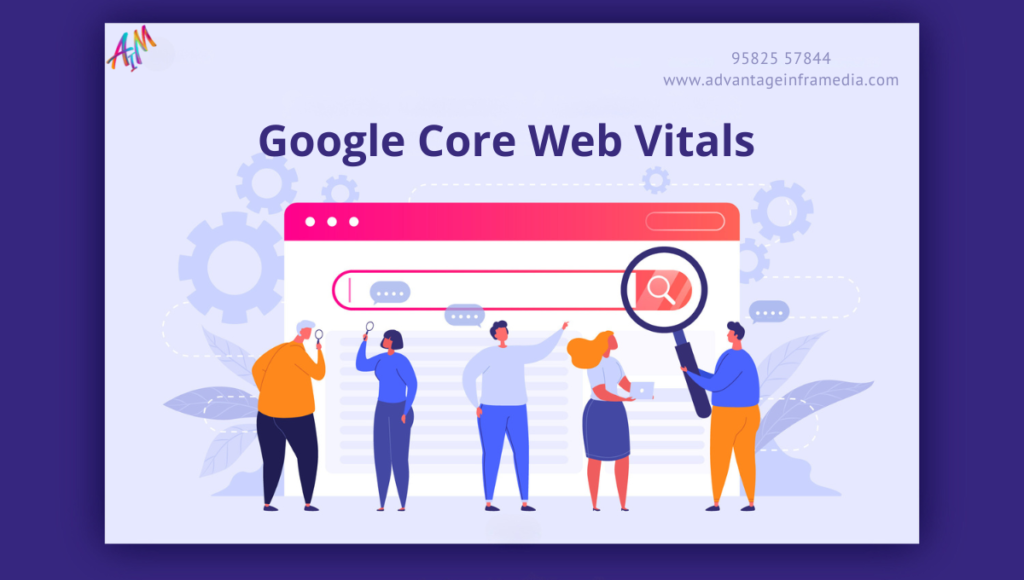Google’s Core Web Vitals have been making waves in the digital marketing community since their introduction. As website performance becomes increasingly integral to search engine optimization (SEO) and user experience, Core Web Vitals are emerging as one of the biggest opportunities for businesses to improve their online presence. In this blog, we will explore what Core Web Vitals are, how they impact digital marketing, and why they represent such a significant opportunity.
Introduction to Core Web Vitals
Google’s Core Web Vitals are a set of specific factors that Google considers important in a webpage’s overall user experience. These metrics focus on loading performance, interactivity, and visual stability, each of which affects how users perceive and interact with a site.
In May 2020, Google announced that Core Web Vitals would be integrated into its ranking algorithm as part of a broader page experience update. This move signaled a shift toward prioritizing user experience in SEO strategies, making Core Web Vitals an essential metric for businesses to focus on.
The Three Core Web Vitals Metrics
At the heart of Google’s Core Web Vitals are three key metrics: Largest Contentful Paint (LCP), First Input Delay (FID), and Cumulative Layout Shift (CLS). Each of these metrics addresses a specific aspect of user experience on the web.
Largest Contentful Paint (LCP)
LCP measures loading performance, specifically the time it takes for the largest piece of content (such as an image, video, or large text block) to load and become visible to users. Ideally, LCP should occur within 2.5 seconds for optimal user experience.
A slow LCP can deter users from staying on a website, leading to high bounce rates. Improving LCP can help businesses enhance their site’s performance and retain more visitors.
First Input Delay (FID)
FID measures interactivity and quantifies the delay between when a user first interacts with your site (e.g., by clicking a link or tapping a button) and when the browser responds. Google recommends an FID of less than 100 milliseconds.
A poor FID can frustrate users, especially on interactive sites like e-commerce stores, where quick response times are critical. By improving FID, businesses can provide a smoother, more responsive experience to users.
Cumulative Layout Shift (CLS)
CLS measures visual stability and tracks how much the layout shifts unexpectedly as the page loads. Elements that move around unexpectedly can cause users to click the wrong buttons or links, leading to a poor experience. Google advises keeping CLS scores under 0.1.
A low CLS ensures that the content on your page remains stable as it loads, improving the overall usability of your website. Reducing layout shifts can significantly enhance user satisfaction and reduce frustration.
Why Core Web Vitals Matter for SEO
Core Web Vitals have a direct impact on search rankings, making them a critical component of any SEO strategy. Google’s decision to integrate these metrics into its ranking algorithm is rooted in its goal to provide users with the best possible experience. Websites that perform well on Core Web Vitals metrics are likely to be favored in search rankings, while sites that underperform may see their rankings drop.
This change has forced digital marketers to broaden their focus from traditional SEO tactics (such as keyword optimization and backlinks) to technical SEO and user experience improvements. Since Google is now prioritizing these factors, businesses must adapt their strategies to remain competitive.
Core Web Vitals and User Experience (UX)
Beyond their SEO impact, Core Web Vitals are a crucial element of user experience (UX) optimization. Poorly performing websites frustrate users, leading to higher bounce rates and lower conversions. Conversely, sites that excel in Core Web Vitals metrics provide a smoother, more enjoyable experience, encouraging users to stay longer and engage more deeply.
Importance of Speed
Site speed has long been a critical factor in user satisfaction. Studies have shown that even a one-second delay in load time can lead to a significant drop in conversions. As mobile traffic continues to grow, fast-loading websites are more important than ever. Core Web Vitals like LCP and FID directly address loading performance, ensuring that users have a quick and seamless experience.
Stability and Trust
Visual stability (measured by CLS) also plays a critical role in user experience. Users expect pages to load predictably and consistently. Unexpected shifts in layout, such as a button moving after the user tries to click it, can erode trust and lead to poor user engagement. By minimizing layout shifts, businesses can create a more trustworthy and professional user experience.
The Connection Between Core Web Vitals and Conversions
Core Web Vitals are closely tied to conversion rates. When users experience frustration due to slow load times, poor interactivity, or layout shifts, they are less likely to convert. In contrast, a smooth, fast, and stable user experience increases the likelihood that users will complete a desired action, such as making a purchase or signing up for a service.
E-commerce Impact
For e-commerce websites, Core Web Vitals are particularly important. Slow loading times or delayed interactivity can cause users to abandon their shopping carts. By optimizing LCP and FID, e-commerce businesses can improve user experience and boost conversions.
Mobile Optimization
Mobile users tend to have higher expectations when it comes to site speed and performance. As mobile internet usage continues to grow, optimizing for mobile Core Web Vitals is critical. Websites that perform well on mobile devices are more likely to convert mobile traffic into leads or sales.
Optimizing Core Web Vitals
Improving Core Web Vitals requires a combination of technical SEO knowledge and performance optimization techniques. Here’s how businesses can enhance their Core Web Vitals metrics:
Improving LCP (Largest Contentful Paint)
- Optimize images and videos: Compress and resize images, use next-gen formats like WebP, and lazy-load non-essential media to reduce LCP time.
- Minimize render-blocking resources: Remove or defer unnecessary CSS and JavaScript that might delay page rendering.
- Use a content delivery network (CDN): CDNs can help reduce server response time by caching content closer to the user.
Reducing FID (First Input Delay)
- Optimize JavaScript execution: Large JavaScript bundles can delay user interaction. Breaking them into smaller, asynchronous chunks improves FID.
- Use browser caching: Caching frequently accessed resources can reduce the time it takes for a browser to respond to user input.
- Prioritize critical interactions: Optimize how the page loads interactive elements by prioritizing above-the-fold content and input responsiveness.
Lowering CLS (Cumulative Layout Shift)
- Specify size attributes for media: Defining height and width for images, ads, and embeds ensures that these elements don’t cause shifts as they load.
- Avoid inserting content above existing content: Dynamically inserting content should be done in a way that doesn’t shift the layout unexpectedly.
- Use stable design frameworks: Consider design practices that maintain layout stability, even when new elements are added.
Core Web Vitals and Competitive Advantage
In the world of digital marketing, small advantages can have a significant impact on a company’s success. With Google’s continued emphasis on user experience, businesses that prioritize and optimize for Core Web Vitals will have a competitive edge over those that don’t. Websites that perform well in terms of loading speed, interactivity, and visual stability will be rewarded with higher rankings and, in turn, greater visibility.
Core Web Vitals and Competitor Analysis
Businesses can also use Core Web Vitals as a benchmark for competitor analysis. Tools like Google’s PageSpeed Insights and Lighthouse allow marketers to evaluate their competitors’ web performance. By identifying gaps in competitors’ Core Web Vitals performance, businesses can uncover opportunities to outperform them in search rankings.
A Long-term Investment
Optimizing for Core Web Vitals is a long-term investment. While traditional SEO tactics can yield short-term gains, improving Core Web Vitals is about creating a better overall experience for users. As more businesses recognize the importance of these metrics, those that have already made optimizations will be better positioned to maintain and grow their online presence.
The Future of Core Web Vitals
Google is constantly evolving its algorithms to better serve users, and Core Web Vitals are likely to play an even greater role in the future. In fact, Google has indicated that these metrics will continue to evolve and that new metrics may be introduced as technology and user expectations change.
Potential New Metrics
While the current Core Web Vitals focus on loading, interactivity, and stability, future updates may include new metrics that measure aspects like accessibility, security, or user engagement. Staying ahead of these changes will require businesses to remain agile and proactive in their digital strategies.
Integration with AI and Machine Learning
As artificial intelligence (AI) and machine learning become more prevalent, businesses may leverage these technologies to optimize their Core Web Vitals automatically. Tools that analyze user behavior in real-time and make adjustments to site performance could help businesses stay competitive in an increasingly complex digital landscape.
Core Web Vitals as a Key Element of the Page Experience Update
Core Web Vitals are a critical component of Google’s broader Page Experience Update, which includes several other signals designed to improve the overall user experience on the web. In addition to the three Core Web Vitals metrics (LCP, FID, and CLS), the Page Experience Update includes the following factors:
- Mobile-friendliness: Ensuring that websites work well on mobile devices, providing responsive design and a seamless mobile experience.
- Safe browsing: Protecting users from phishing, malware, and other harmful content.
- HTTPS security: Ensuring that websites are secure and that user data is protected via HTTPS encryption.
- No intrusive interstitials: Avoiding the use of pop-ups and other intrusive elements that obstruct the user’s ability to interact with the page.
By incorporating these additional signals, Google is signaling a move toward a more holistic view of user experience that goes beyond traditional ranking factors. Businesses that optimize for the full range of Page Experience signals—including Core Web Vitals—will be well-positioned to succeed in this new era of SEO.
How to Measure Core Web Vitals
Measuring Core Web Vitals requires the use of specialized tools that provide insights into your website’s performance. Google offers several free tools that allow businesses to monitor and improve their Core Web Vitals metrics:
Google PageSpeed Insights
PageSpeed Insights is one of the most commonly used tools for measuring Core Web Vitals. It provides both mobile and desktop performance scores for your website and offers specific recommendations for improving your LCP, FID, and CLS. The tool breaks down issues into categories like “Diagnostics” and “Opportunities,” giving you actionable insights to optimize your site’s performance.
Google Search Console
Google Search Console now includes a dedicated Core Web Vitals report, which allows site owners to track their performance across LCP, FID, and CLS. The report highlights which pages on your site are considered “Good,” “Needs Improvement,” or “Poor” in terms of Core Web Vitals. This tool is invaluable for identifying specific areas where your website is falling short and provides a roadmap for optimization.
Lighthouse
Lighthouse is another powerful tool for auditing website performance. It can be run directly in Google Chrome’s Developer Tools or through third-party tools, and it provides detailed performance reports, including Core Web Vitals metrics. Lighthouse analyzes various aspects of a website, including accessibility, SEO, and performance, making it an essential tool for developers and marketers alike.
Chrome User Experience Report (CrUX)
CrUX is a dataset that collects real user experience data from Chrome users around the world. Unlike synthetic testing tools like Lighthouse or PageSpeed Insights, CrUX provides field data based on actual user interactions with your site. This data is particularly useful for understanding how your site performs across different devices, network conditions, and locations.
The Role of Web Hosting in Core Web Vitals Optimization
While optimizing your website’s code and content is essential for improving Core Web Vitals, the performance of your web host plays a significant role as well. A slow or unreliable hosting provider can negatively impact LCP, FID, and CLS, even if your website is otherwise well-optimized.
Server Response Time
One of the most critical factors influencing LCP is server response time. If your server is slow to deliver content to the user’s browser, no amount of front-end optimization will compensate for that delay. Choosing a hosting provider with fast, reliable servers and low latency is essential for optimizing LCP.
Content Delivery Networks (CDNs)
Using a Content Delivery Network (CDN) is another effective way to improve your Core Web Vitals. CDNs distribute your website’s content across multiple servers located around the world, allowing users to access the site from a server that’s geographically close to them. This reduces the time it takes to load content, improving both LCP and FID.
Optimized Caching
Caching is another critical component of website performance. By caching static resources like images, stylesheets, and scripts, you can reduce the amount of time it takes for a page to load. This is particularly important for repeat visitors, as cached content can be delivered almost instantly. Optimized caching strategies can have a positive impact on all three Core Web Vitals metrics.
Case Studies: Companies That Improved Core Web Vitals
Several businesses have already reaped the benefits of optimizing their Core Web Vitals, demonstrating how impactful these metrics can be on overall performance, user experience, and SEO rankings. Let’s look at a few case studies.
E-commerce Platform: Shopify
Shopify, one of the largest e-commerce platforms in the world, recognized the importance of Core Web Vitals early on. By focusing on optimizing LCP and FID, Shopify reduced load times across thousands of its stores, leading to significant improvements in user engagement and conversion rates.
The company achieved these improvements by compressing images, minimizing render-blocking resources, and leveraging CDNs to deliver content faster. As a result, many Shopify-powered stores saw lower bounce rates and higher conversion rates, demonstrating the power of Core Web Vitals optimization for e-commerce businesses.
News Website: The Guardian
The Guardian, a major news website, undertook a comprehensive effort to improve its Core Web Vitals performance, particularly focusing on reducing CLS. News websites often face challenges with layout shifts due to dynamically loaded content like ads and videos.
By specifying size attributes for media, reducing the number of ads above the fold, and prioritizing content stability, The Guardian was able to reduce its CLS score significantly. This improvement led to a better user experience, lower bounce rates, and higher reader retention.
B2B SaaS Company: Intercom
Intercom, a B2B SaaS company, optimized its website for Core Web Vitals by focusing on FID. As a company that relies heavily on interactive elements, such as chat widgets and sign-up forms, Intercom’s user experience was particularly sensitive to input delays.
By optimizing JavaScript execution and deferring non-essential scripts, Intercom reduced its FID to below 100 milliseconds, providing users with a fast and responsive experience. This optimization helped Intercom improve lead generation and customer engagement, showcasing the importance of FID for businesses that rely on interactivity.
Challenges and Obstacles in Core Web Vitals Optimization
While the benefits of optimizing Core Web Vitals are clear, businesses often face several challenges in improving these metrics. Some common obstacles include:
Complexity of Modern Websites
Modern websites are more complex than ever, with large amounts of multimedia content, third-party scripts, and dynamic elements. This complexity can make it difficult to achieve optimal scores on LCP, FID, and CLS, particularly for websites with rich interactivity or media-heavy content.
Third-Party Resources
Many websites rely on third-party resources, such as ads, analytics tools, and social media embeds. These resources can significantly impact Core Web Vitals metrics, particularly LCP and CLS. Optimizing third-party resources can be challenging, as businesses often have limited control over how these elements are loaded and displayed.
Balancing Performance and Design
Another challenge businesses face is balancing performance with design. While minimalist designs may lead to faster load times and better Core Web Vitals scores, they may not align with a company’s branding or aesthetic goals. Finding the right balance between performance optimization and visual appeal is key to ensuring a positive user experience without sacrificing brand identity.
Core Web Vitals in the Context of Broader Digital Marketing Strategy
While optimizing Core Web Vitals is important, it should be viewed as part of a broader digital marketing strategy. Core Web Vitals optimization complements other elements of digital marketing, including content marketing, SEO, social media marketing, and paid advertising.
Enhancing SEO Strategy
Core Web Vitals should be integrated into your broader SEO strategy. While traditional SEO elements like keyword research, on-page optimization, and backlinks remain important, technical SEO—particularly focusing on site performance and user experience—has become equally critical in achieving high search rankings.
Supporting Content Marketing
Core Web Vitals optimization can also enhance the effectiveness of your content marketing efforts. High-quality content will always be a cornerstone of digital marketing, but delivering that content in a fast, responsive, and stable way improves user engagement. When your blog posts, articles, or videos load quickly and don’t suffer from layout shifts, users are more likely to consume and share your content.
Amplifying Paid Advertising
While Core Web Vitals primarily impact organic search, they can also have implications for paid advertising efforts. For example, Google Ads takes landing page experience into account when calculating Quality Score, a factor that influences ad rank and cost-per-click (CPC). A well-optimized landing page with strong Core Web Vitals performance can help improve Quality Score, leading to better ad placement and lower costs.
Final Thoughts: Core Web Vitals as a Long-Term Investment
In the fast-paced world of digital marketing, trends and algorithms are constantly evolving. However, Google’s focus on user experience—and by extension, Core Web Vitals—is likely to remain a priority for the foreseeable future. By investing in optimizing LCP, FID, and CLS, businesses are not only improving their current search rankings and user experience but also positioning themselves for long-term success.
Core Web Vitals represent a significant opportunity for businesses to gain a competitive advantage in digital marketing. Those that prioritize performance optimization, invest in technical SEO, and deliver exceptional user experiences will be the ones that stand out in an increasingly competitive online landscape. By embracing this shift and viewing Core Web Vitals as an integral part of their digital marketing strategy, businesses can thrive in the evolving world of search engine algorithms and user experience optimization.
Conclusion: Embracing the Core Web Vitals Opportunity
Google’s Core Web Vitals represent a major shift in how digital marketers approach SEO and user experience. By prioritizing these metrics, businesses can improve their search rankings, enhance user experience, and increase conversions. Core Web Vitals offer a clear path to success in a competitive digital marketplace, making them one of the biggest opportunities in digital marketing today.
By focusing on optimizing LCP, FID, and CLS, businesses can not only meet Google’s ranking requirements but also provide a better, more satisfying experience for their users. As digital marketing




